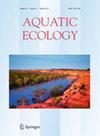The bivalve industry faces significant financial losses due to fluctuating salinity levels, highlighting the need to determine the optimal salinity for Saccostrea cucullata cultivation. This study investigates how salinity affects growth, filtration rate, nutritional composition, and antioxidant status. Oysters, averaging 6.26 ± 0.82 cm in shell length and 62.70 ± 15.01 g in weight, were randomly divided into four groups (10 individual each) within 10 L containers with salinities of S20, S25, S30, and S35 PSU. Over eight weeks, they were fed Chaetoceros sp microalgae twice daily. Also, at one- and two-hour intervals, their density was again counted to determine the filtration rate. Fatty acid and amino acid compositions were analyzed using gas chromatography (GC) and high-performance liquid chromatography (HPLC), respectively. Antioxidant enzyme activities (superoxide dismutase (SOD), catalase (CAT), and glutathione peroxidase (GPx)) were measured by spectrophotometr. Filtration rates were measured at one- and two-hour intervals, with the highest rates observed at 30 and 35 PSU after one hour and at 35 PSU after two hours, significantly differing from other salinities (P < 0.05). Analysis revealed that a salinity of 35 PSU resulted in elevated levels of several amino acids including arginine, alanine, taurine, threonine, serine, glutamic acid, tyrosine, phenylalanine, histidine, and valine compared to other levels (P < 0.05). Additionally, 35 PSU showed the lowest levels of myristic acid (C14:0), palmitic acid (C16:0), and total saturated fatty acids (SFA), significantly differing from other salinities (P < 0.05). In terms of monounsaturated fatty acids (MUFA), the highest levels of palmitoleic acid (C16:1) and total MUFA were found at a salinity of 35 PSU, with significant differences from other levels (P < 0.05). Similarly, 35 PSU exhibited the highest total polyunsaturated fatty acids (PUFA) content, including linolenic acid (C18:3), arachidonic acid (C20:4), docosahexaenoic acid (DHA, C22:6), and eicosapentaenoic acid (EPA, C20:5), along with favorable ratios of n-3 to n-6 series fatty acids. Moreover, the lowest levels of CAT, GPx, and SOD were recorded at a salinity of 35 PSU (P < 0.05). Overall, these findings suggest that a salinity of 35 PSU optimally enhances the filtration rate, nutritional profile, and antioxidant capacity of S. cucullata. These results underscore the significant influence of salinity on physiological and biochemical processes in this species, providing valuable insights for improved management and cultivation practices in the bivalve industry.


